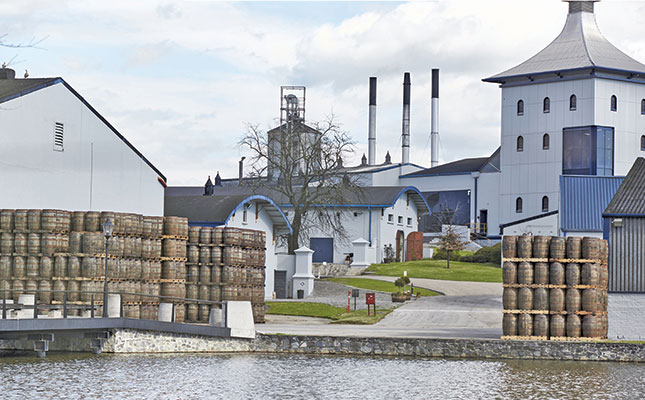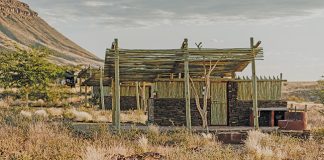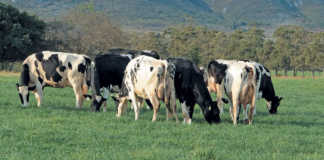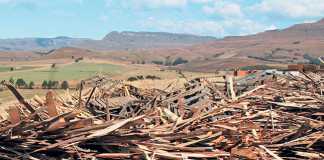
Photo: Supplied
James Sedgwick Distillery in Wellington in the Western Cape, home to Three Ships Whisky and Bain’s Cape Mountain Whisky, was recently named the world’s best sustainable distillery at the 2020 Icons of Whisky Awards.
It also scooped the Sustainability Leadership Award in the Business Intelligence Group’s 2020 Sustainability Awards for successfully making sustainability an integral part of its business practices or overall mission.
The distillery, the only commercial whisky distillery in Africa, has been at the forefront of innovation with state-of-the-art equipment and ingenious sustainability projects. This is the second year running that the multi-award-winning distillery has been recognised by the organisers for integrating green practices into all aspects of the whisky-making process.
Water management
“Making whisky is not just about the liquid. It’s about finding ways to lessen the impact on the environment,” explains Andy Watts, founder distiller of Bain’s Cape Mountain Whisky.
He says the distillery has been phasing in environmentally focused, green initiatives from as early as 1995, when the company installed an anaerobic digester that enables the distillery to pretreat its waste water before sending it to the municipal water treatment works.
Watts adds that in 2017 and 2018, when the Western Cape was in the throes of a severe drought, the distillery had to halt production for four months.
“This forced us to re-evaluate how we manage our water. That’s also when we installed a reverse osmosis plant.”
He explains that the treatment of the distillery’s waste water through anaerobic digestion and then further through a reverse osmosis plant has enabled the facility to reduce its consumption of fresh water.
“We don’t use this water in the physical process of making whisky as it’s still perceived as waste water. It’s reused in our boilers and cooling systems and reduces our water requirements by approximately 35%,” says Watts.
Reducing coal usage
Methane gas is also captured as a by-product from the anaerobic digester. Watts explains that as the waste water is fed into the anaerobic digester to break it down to a lower chemical oxygen demand level, it is turned into methane gas. This is fed into a gas boiler that produces steam used in the whisky-making process.
According to distillery manager David Dube, the methane gas boiler has enabled the distillery to reduce its carbon footprint by cutting coal usage by 502t/ year, a saving of between 10% and 15% annually.
Upcycling carbon dioxide
During the fermentation process, the by- product carbon dioxide is produced naturally.
“The company looked at the idea of investing in a carbon dioxide recovery plant for a few years, especially when a carbon dioxide shortage emerged in the country. If the distillery is operational 24/7, we’re producing a lot of carbon dioxide. Instead of releasing it into the atmosphere, we started to entrap it for our own business purposes,” says Watts.
Dube explains that the collected carbon dioxide is purified and sent to bottling sites, where it is used in carbonated drinks such as cider and sparkling wine. He points out that by collecting the carbon dioxide emanated during fermentation, the company managed to prevent the release of 3 200t of carbon dioxide into the atmosphere.
Spent grain repurposed
Other sustainability practices that have been integrated over the years include the recycling of spent grain. Dube explains that malt and maize are mashed and fermented to produce alcohol for distillation. The effluent by-product from distillation is sent to the liquids-solids separator, from which the solids are collected as spent grain.
The distillery has teamed up with local farmers who use this spent grain as a natural, high-protein animal feed. Although the spent grain is available to all livestock farmers, it is mostly local cattle farmers who make use of it.
“Wellington sits just off the main route from Namibia to the Cape. Many of the farms along the R44 are feedlot farms where the cattle put back the weight they lost on the trip from Namibia,” explains Watts.
The high protein content of the spent grain cuts the farmers’ feeding time to return the animals to market weight by 10 to 14 days.
“This also holds a financial benefit for the distillery, because otherwise we’d have had to pay for transportation for the disposal of the spent grain.”
A green future
To celebrate the distillery’s recent accolades for sustainability, Bain’s Cape Mountain Whisky
has launched a limited-edition green label. The distillery partnered with Greenpop, a non-profit organisation on a mission to plant trees, and Plant Nation Africa, a non-governmental organisation focused on regreening and enlarging Johannesburg’s urban forest.
The distillery has committed itself to planting 5 000 trees, one for every five litres of green-label Bain’s sold.
According to Watts, the current storage facilities at the distillery were constructed without the idea of solar panels in mind.
“If we build more maturation stores, solar power will surely be investigated. We’ll reposition the stores to make maximum use of solar power. The current east-west positioning of the structures is not effective for solar power.”
He adds that they are keeping an eye open for more initiatives that could be used to optimise their sustainability practices.











